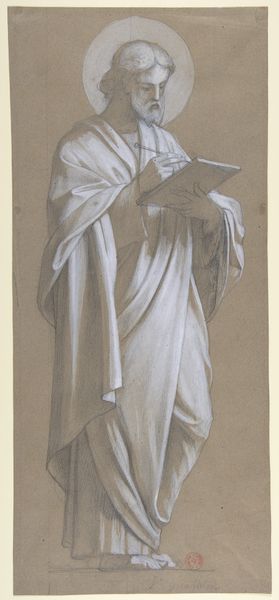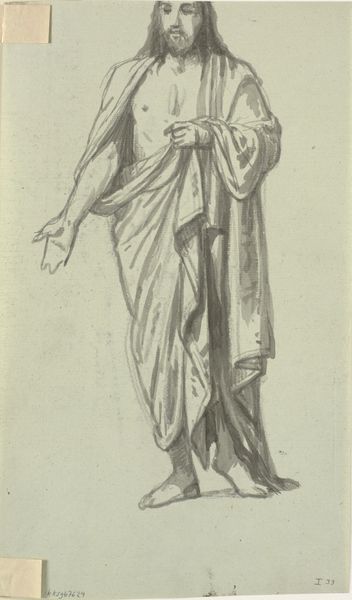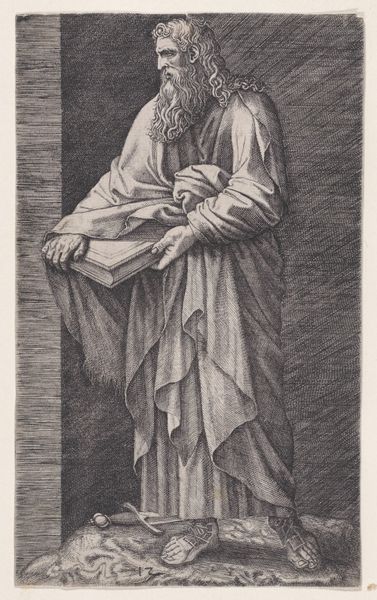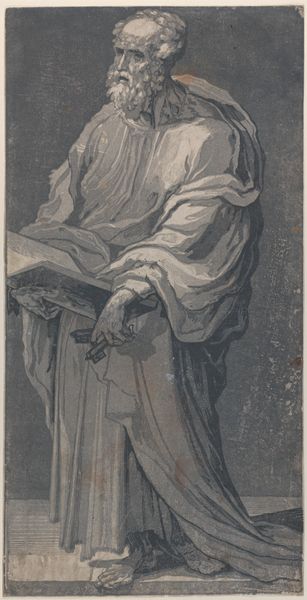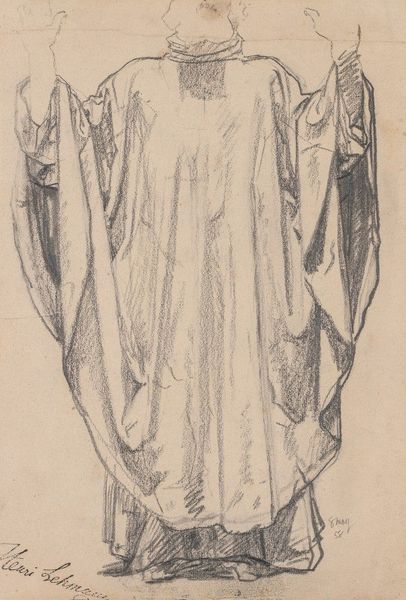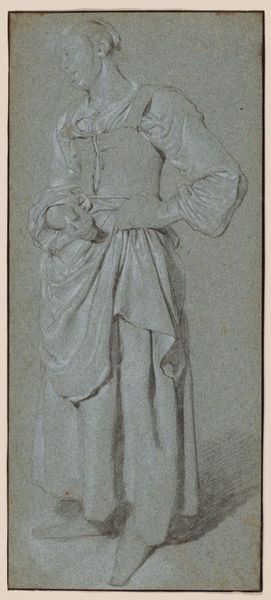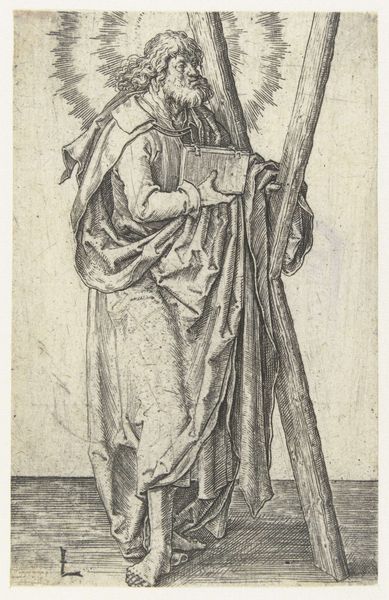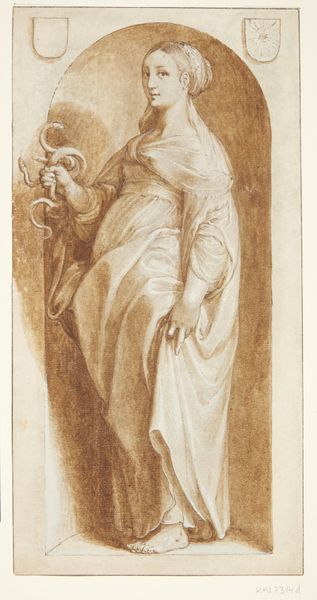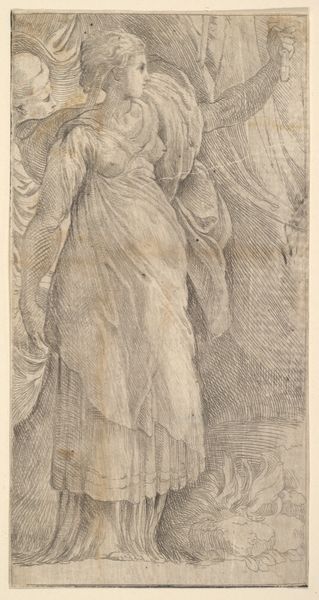
Dimensions: 17 13/16 x 6 5/16 in. (45.2 x 16.1 cm)
Copyright: Public Domain
Editor: Here we have Camille-Auguste Gastine's *Mater Dolorosa*, likely made sometime between 1835 and 1867. It’s a charcoal drawing – or perhaps a print of a charcoal drawing – of the Virgin Mary, and what strikes me most is how restrained her sorrow appears. What do you see in this piece, especially considering the historical context? Curator: Considering the socio-political context, one notices how the figure of Mater Dolorosa – the sorrowful mother – gains significant public relevance. The French Revolution and subsequent upheavals led to a resurgence of religious sentiment, where figures like Mary provided solace and a model of suffering. The very public role assigned to women as moral compasses becomes visually intertwined with this imagery. Editor: So, the image isn't just religious devotion, it’s also tied to specific gender roles? Curator: Precisely. The art academies of the time, which heavily influenced artists like Gastine, also played a crucial role. The 'academic art' style, with its emphasis on idealized forms and classical references, lent a sense of authority and universality to the image, reinforcing societal norms about feminine piety and strength in suffering, designed for consumption. How might public access affect interpretations? Editor: The easy reproduction as a print meant broader access, shaping a unified emotional experience – or perhaps reinforcing pre-existing societal expectations of women’s role in grief. I’d initially viewed her sorrow as contained, but now I see it as maybe conforming to an expected decorum. Curator: Exactly, understanding the public life of images opens entirely new insights into the work itself!
Comments
No comments
Be the first to comment and join the conversation on the ultimate creative platform.
